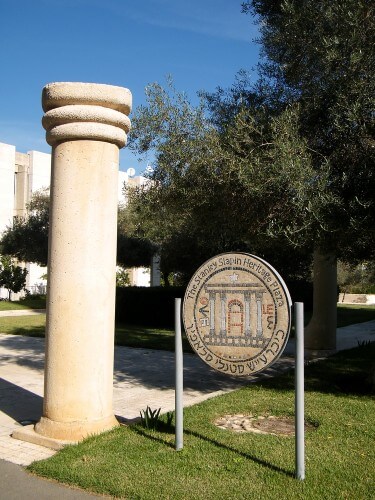Specially funded research is research funded by non-university sources such as foundations, R&D programs and grants from the Ministry of Science and other government ministries, as well as intra-university funds designated for research. This is different from the funding made from the current budget of the universities.

The CBS data collected for the National Council for Research and Development at the Ministry of Science show that during the year 9, seven research universities in Israel raised one and a half billion NIS to finance research from non-university sources. This is an increase of about 2008% compared to 7.4. Specially funded research is research financed by non-university sources such as foundations, R&D programs and grants from the Ministry of Science and other government ministries, as well as from intra-university funds designated for research. This is different from the funding made from the current budget of the universities. The annual OT budget is 9 billion shekels, which means that in total the universities in Israel are budgeted for XNUMX billion dollars - not including new buildings.
Among the universities, the Hebrew University leads in raising funding for research from non-university sources with NIS 399 million that it raised in 310. It is followed by Tel Aviv University with approximately NIS 239 million, the Weizmann Institute of Science with approximately NIS 205 million, the Technion with NIS 182 million and Ben Gurion University of the Negev with approximately NIS 112 million. They are followed by Bar Ilan University with approximately 24 million NIS - an increase of 64 million NIS compared to the year before - and the University of Haifa with approximately XNUMX million NIS.
Broken down by fields, the Hebrew University leads in raising external funding in the fields of humanities, education, society and law as well as in medicine, while the Weizmann Institute leads in natural sciences with raising from external sources of NIS 230 million and the Technion in engineering and architecture with NIS 119 million.
"The ability to obtain external funding for research indicates both the level of researchers at the university and its abilities in raising investments," says Prof. Yitzhak Ben Israel, chairman of the National R&D Council. "External funding on such a high scale is a sign of the quality of research in Israel, but also a worrying sign indicating a lack of research budgets that are routinely directed to universities."
According to the Chief Scientist at the Ministry of Science, Technology and Space Prof. Nurit Yeremia, "Israeli researchers compete with their colleagues around the world to obtain research resources from the most prestigious foundations in the world and the respectable winning rates indicate the excellence of Israeli researchers. At the same time, the State of Israel lacks government resources for research. The Ministry of Science, Technology and Space aims to help obtain additional research resources both through dedicated research funds and through establishing science ties with other countries."
The expenditure for research and development in universities, including funding from the current budget, constitutes approximately 13% of all expenditure for civilian research and development in Israel. The main source of funding is from foundations and research programs in Israel, which are responsible for 56% of the funding in 2010. Accordingly, 44% of the funding comes from sources abroad. In all areas, the share of funding from Israel is higher than that of funding from abroad. The relative share of funding from Israel is particularly high in the fields of humanities and law (about 63%), social sciences (about 61%) and agriculture (about 68%).
From the analysis of expenses according to research fields in the seven research universities, it appears that about 54% of the expenses were in the fields of mathematics and natural sciences, about 9% in medicine, 16% in engineering and architecture, 4% in agriculture and about 16% in the humanities, social sciences and law. Since 2008, there has been a decrease in the relative share of the biological sciences - from about 30% to about 28%, and an increase in the share of engineering and architecture from 14% to 15%. The relative share of the medical field remained unchanged at 9%.

2 תגובות
I would love to participate in research on cancer and medicine
I have something to show for things that will be around in another 50 years
But maybe I'm not from the clique and I'm a pretty simple person but a first class professional
I would be happy if you would check out what I have in my bag and be a part of a particularly cutting-edge research
I have been an independent researcher in the field of medicine and cancer in particular for about 15 years
And it's a shame that people like me, who think and act outside the box, and outside of the university colleague, don't share
……. There are cosmic surprises.
Thanks ………
Bnei Aaron 050-5561363
Mail……… bennya8888@gmail.com
It says...."to fund research from external sources".... is that so ?
What is external? The studies (or the funding)….
It is appropriate that in the publications of the Ministry of Science they should pay attention to the building of Hebrew law
And correct syntax...